Reading music can be great for your bass playing in many ways you may never have considered.
Both your fretboard knowledge (notes on the bass neck) and your rhythm can see significant improvement with even an elementary level of reading. In this video we look at how reading can benefit these two areas. (Remember to check out the Simple Steps To Sight Reading course if you’re interested in improving your overall playing standard)
To Read Or Not To Read
Now, some of you might be thinking,
“Why do I need to learn to read music? I can get by with using tabs and playing by ear and there are thousands of fantastic, non reading bass players!”
And that’s true. But I’m going to present two really great reasons for learning to read that can turbo charge some aspects of your bass playing that you might not have considered.
Learning The Fretboard
So on the face of it, the most obvious reason is just the fact that your learning to read. That can be a good enough reason for some. You open the doors to all kinds of gigging and practice possibilities and I obviously don’t need to expand on that. So my first big, not so obvious reason, is how it can improve your fretboard navigation.
When you sight read a piece of music you have to cut down on the number of processes in the reading chain. It’s not enough to see a note on the page, decipher that note, look at the bass, find the note and then play the note. It’s too many processes. It has to be an immediate reaction. That symbol on that line or space equals that fret there. We need one process. We’ve got too many other things to look at. We’re reading the rhythm, the dynamics, the next note coming up and everything else.
One Step Process
When you learn to read well, which is basically sight reading, you develop that muscle memory and note recognition to such a level that it’s on an instinctive level. Think about reading the written word in whatever language. You don’t spend all your time working out each word and spelling them out. You’d never get anywhere. That’s how you start out, but eventually you don’t think about it. It’s the same with the bass fretboard.
I get asked all the time for exercises on learning the notes and I’ve got a whole bunch of little exercises like playing scales through the cycle and stuff like that, but I can tell you from experience that the best and most musical way is in application and reading is an inherently musical application.
Working On Rhythm
The second, not so obvious reason for learning to read is Rhythm. One of the great aspects of learning to read is the way we see rhythm from an ordered visual standpoint. When we learn all the various rhythmic symbols and notation, we have to understand how beats and bars are divided and subdivided and this is all performed with a constant reference to the underlying pulse.
As an example, when we learn the basic whole, half and quarter note rhythms in 4/4 in standard notation, we learn to divide the 4 beats into various groupings and learn to feel them. So we would learn a whole note is 4 beats. We learn what the symbol is and how it would be played. We then learn the combinations of half notes and quarter notes and practice them as ordered permutations.
Once we’ve learned those rhythms, we take the same methodology and apply it every subdivision, first we move to 8th notes and then 16th notes.
This is all simple mathematical ordering and permutations so we get to exhaustively practice all the different variations. That way, just as with pitch, we don’t have to be working stuff out on the fly when we’re reading. We automatically understand what that rhythm is, we can hook the notes on their and concentrate more on the expression of the music rather than the nuts and bolts of pitch and rhythms.
Simple Steps To Sight Reading
In the Simple Steps To Sight Reading Course we exhaustively work through every pitch and rhythmic permutation in isolation before combining them together. This is all aside from all the position playing, the key signatures, the expression markings and all that other stuff.
It’s all addressed in the course in simple easy steps. There are over 10 hours of video tuition, over 400 pages of exercises and pieces to work on and hundreds of audio tracks to play along to. This is the only exhaustive, step by step method for addressing music reading on bass guitar and I really feel it could a quantum leap forward in the way we learn bass guitar.
So if you’re interested in getting started with reading music or if you’ve tried before and just found it to be too much hard work, check out the Simple Steps To Sight Reading course over at Talkingbass by following the link below!

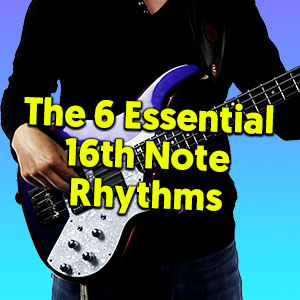
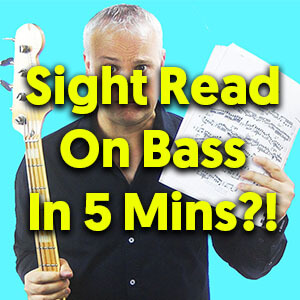
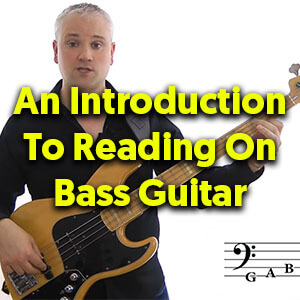
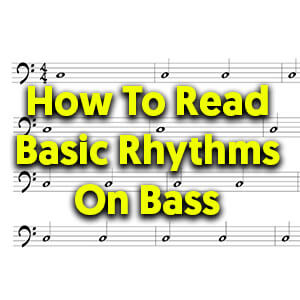
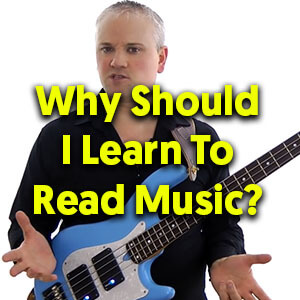
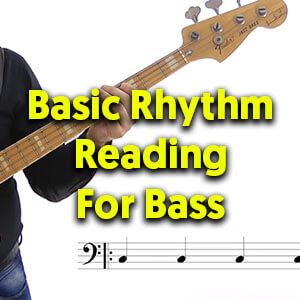

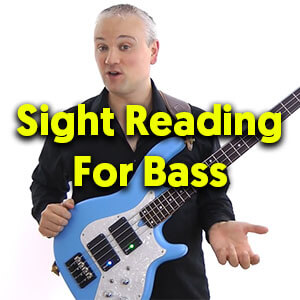
Very simple and gud
I have already purchased the old reading program. How much to upgrade
Upgrade is $49 for the first two weeks of release(you’re actually just purchasing volume 2 – levels 4,5 and 6). $69 after that. I sent an email to all Reading Volume 1 customers so check your inbox for the message. Cheers, Mark
Hello Mark,
I’m new here.
I purchased this lesson (Sight Reading) and I already am convinced this is a good course for me.
Question; I play a lot with my fretless bass but in my opinion for this course, at least to start with, is my fretted bass better. Am I correct?
Best regards, Ben
Excellent technique method. I learned so fast and went through Level 1 in one week. Playing the music really helps get the feel of the notes and the timing. It’s the best way to learn to sight read.